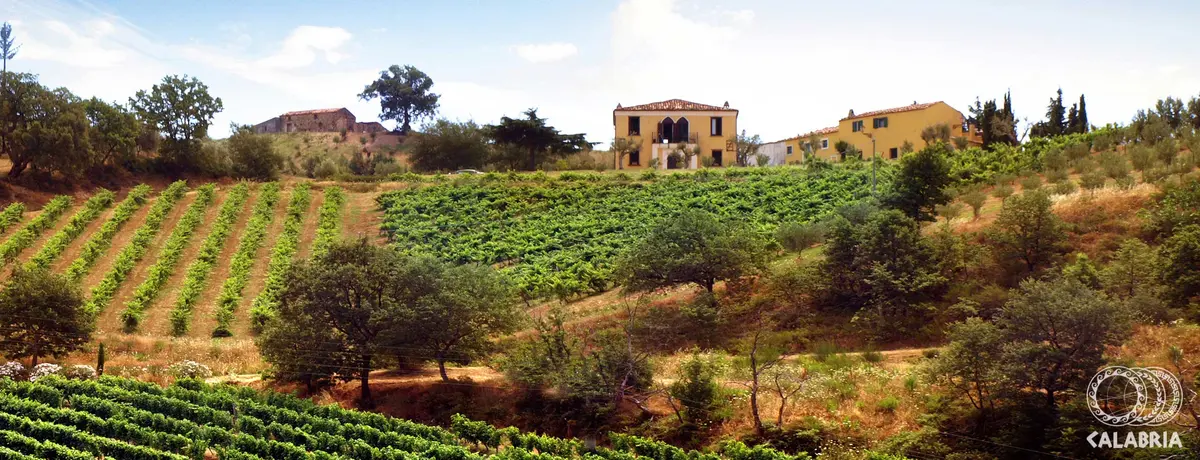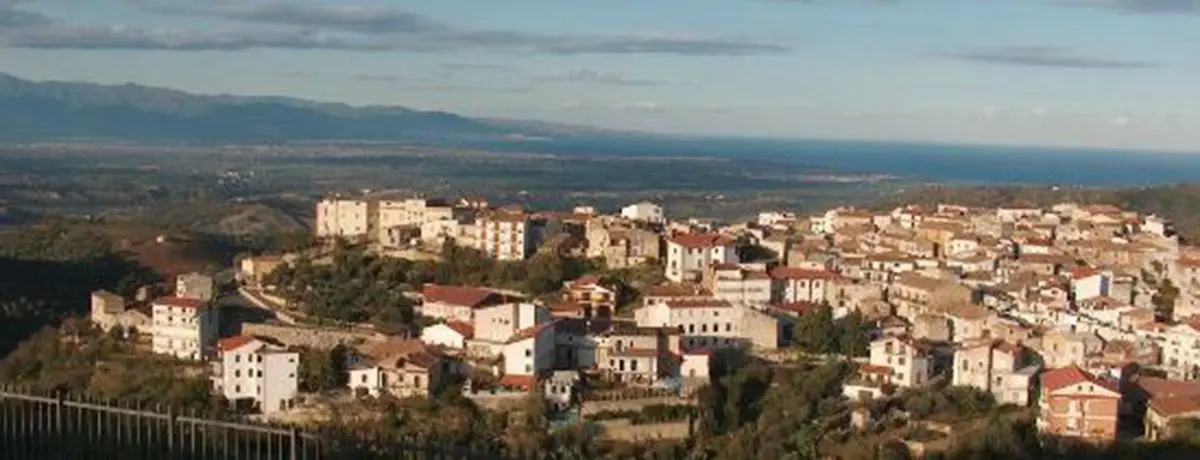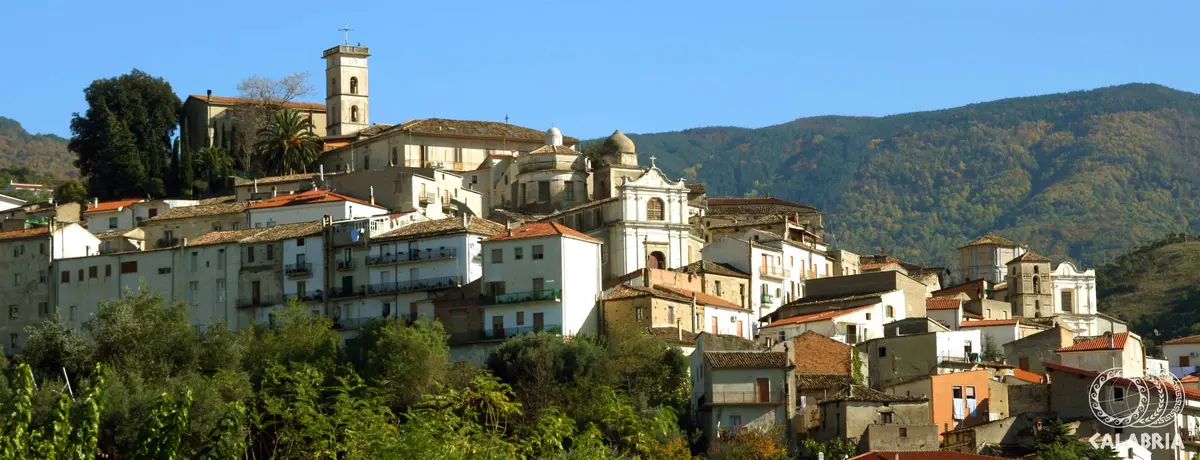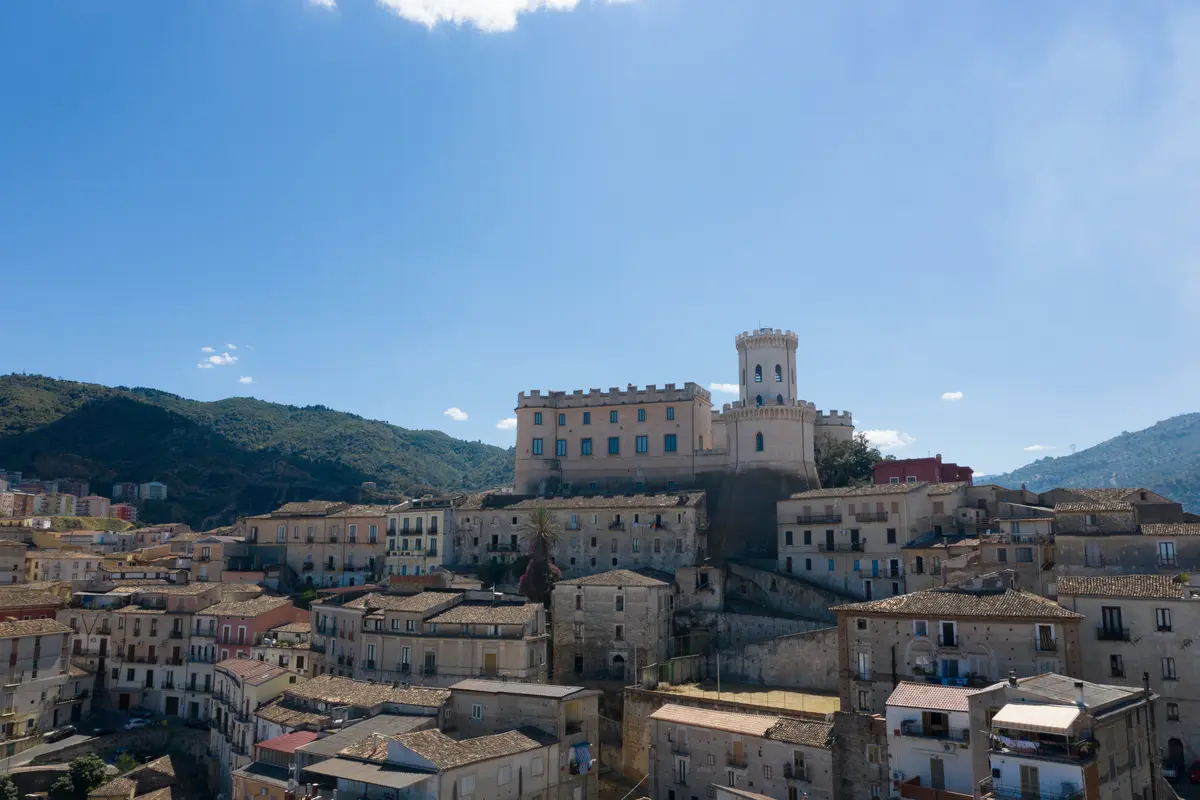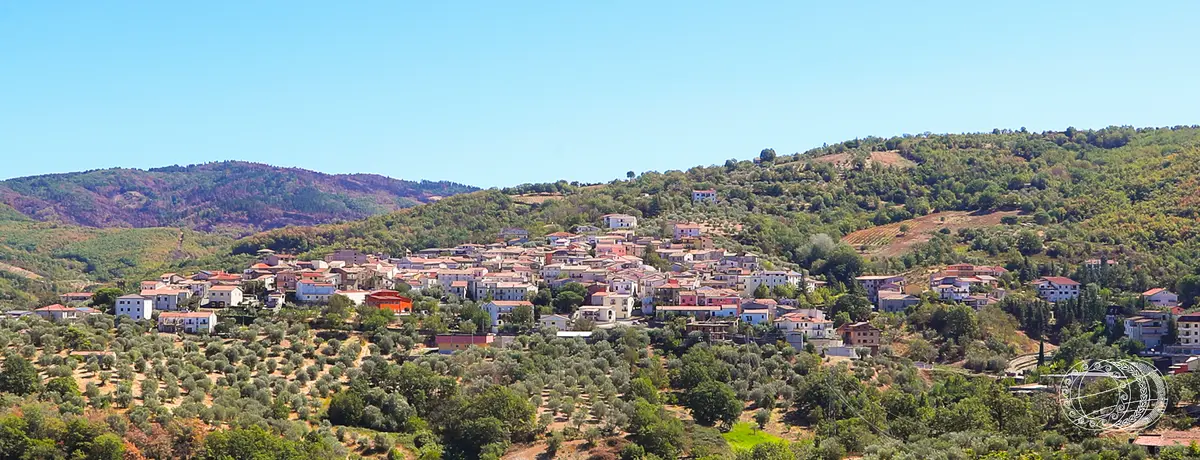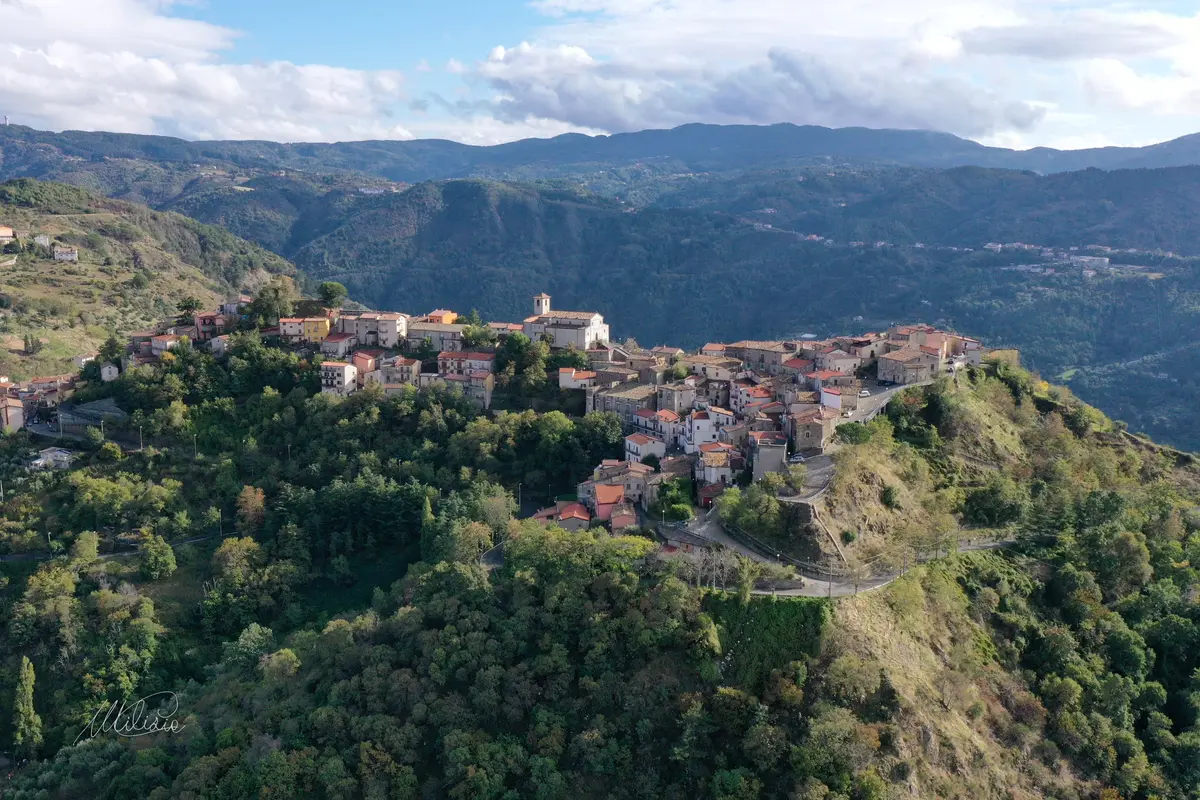San Demetrio Corone
San Demetrio Corone, the Capital of arberëshë culture
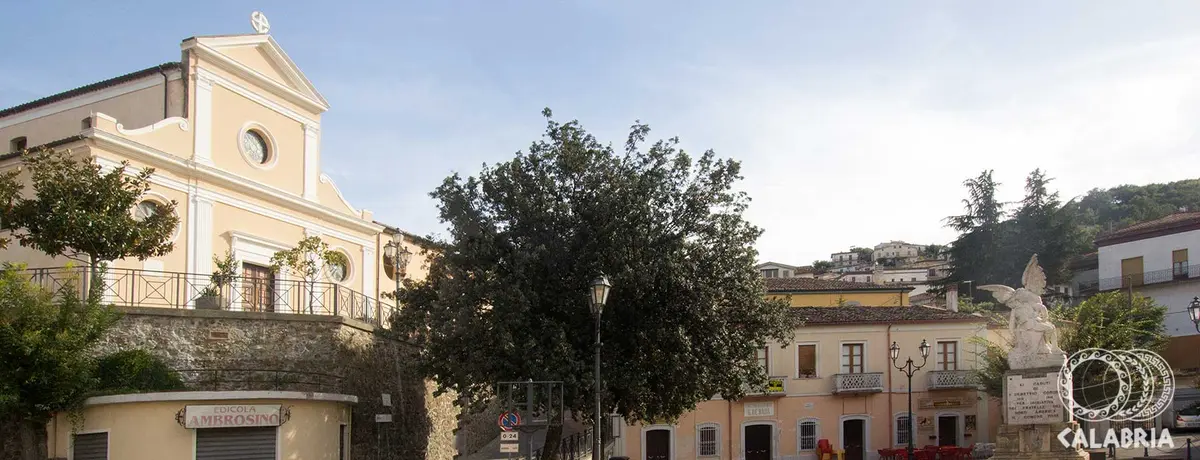
Town
San Demetrio Corone (or Shën Mitri in the arbëreshë language) is a small village in the province of Cosenza that stretches out across the hills from the plain of Sibari near the Greek Sila.
Recognisable by its red roofs that seem to camouflage into the surrounding landscape, the village has retained part of its original layout.
The locals seem to have very little concern for the passing of time. They continue to protect the treasures of the arbëreshë culture which is only very rarely diluted by the Calabrian one.
Considered the capital of arberëshë culture, it extends across a fertile slope dotted with mulberry trees, olive groves, and chestnut trees. The village as a whole possesses characteristics similar to those of Calabria’s other arbëreshë villages. The Albanians arrived at this centre after 1468 to flee from their homeland which was under Turkish invasion. They took refuge in the territories of Princess Irene, the Princess of Bisignano and daughter of the mythical hero Skanderbeg.
Traversed by countless winding alleys that branch off to unexpected sheshiet (clearings), the village is home to many ancient churches and splendid aristocratic buildings. The locals do not seem perturbed by the passing of time and continue to protect the treasures of the arbëreshë culture which has only very slightly been influenced by the Calabrian one. Although only a small village, the arbëreshë ethnic identity is firmly rooted and still very much alive. The culture, traditions, language, Byzantine rites, and colourful traditional costumes still hold an important place in San Demetrio today. The village is also the site of the Italian-Albanian College of Saint Adrian, an important religious and cultural body for the conservation of oriental rites, traditions, and the heritage of the arbëreshë identity. The village is home to one of the most precious 11th-12th century buildings in Calabria: the Church of Saint Adrian, an authentic masterpiece of architectural and spiritual virtuosity where elegance and beauty merge in a mysterious and seductive aesthetic.
The Church of Saint Adrian
The Church of Saint Adrian is an artistic masterpiece from the 11th and 12th centuries and could be considered the gateway to San Demetrio’s typical ethno-anthropological arbëreshë universe.
The church was founded by Saint Neilus of Rossano, a Basilian monk, hermit, and arguably the greatest figure in Calabrian-Greek monasticism who, in 955, built a small church dedicated to the martyrs Adrian and Natalia as a means of establishing a monastery close to the village. The Church may not have preserved its original structural and architectural unity, but it reveals different languages and stylistic messages which showcase a refined elegance that flits between the monstrous, the mysterious, and the fantastic. The Church can be accessed by either of two side entrances, with the main one situated just beneath the big stone and brick bell tower. The second entrance is known as the Porta dei Monaci (Monks' Door) because it was once a means of accessing the monks' Church from the adjacent Italian-Albanian College. It is decorated with marble jambs and two stone masks.
Inside, the three naves have a wooden roof. Four arches flank the central nave which is supported by ancient columns and more recently constructed pillars. The walls are frescoed with depictions of saints dating back to the 12th and 13th centuries, whereas the apse is decorated with a scene from a larger cycle, namely the Presentation of Mary at the Temple. At the end of the nave is a baroque dome where the Creator is depicted with holy monks, Sisters, and Saint Nile praying before Christ on the Cross with his right hand outstretched as he blesses him. But perhaps the most authentic masterpiece of the Church is its floor (made between the 12th and 12th centuries) which is partly opus sectile and partly mosaic. The four expertly hand-crafted mosaics depict imaginary and striking animals. The church also contains interesting sculptural finds from the Norman period as well as two capitals crowning the columns, one of which is Byzantine and the other Corinthian.
San Nilo Ethnographic Museum
Inspired by publisher Giovanni Macrì, the Museum exhibits domestic utensils, and rural and handicraft tools to paint a true picture of traditional family life in the farming world. The exhibition spans a historical period starting from the time of the Basilian monks up to the 20th century, delving into the first Albanian emigrations to Calabria in 1471 along the way. With the help of audio-visuals and photos the "material culture” merges with the "ideal" culture of arbëreshë linguistics, music, and popular choreography.
Popular traditions
The unique Easter celebrations under orthodox rite are accompanied by traditional Albanian folk dances and end with the folkloristic Arbëreshë Song Festival, which was first held in 1980 at the request of the Italian-Albanian College. Out of all of Calabria’s ancient medieval villages, San Demetrio Corone is among those with the highest number of folklore and cultural activities organised throughout the year. During the commemoration of the dead, the priests (papàdes) visit families to bless the "panagie" (tables set with wine, bread, boiled wheat, and a candle in the centre) which symbolise the resurrection of bodies and the immortality of the soul. Traditionally, during the night between the Saturday and Sunday of Holy Week (Java e Madhe), it is customary to go to the fountain of the monks (pusi) at the College of Saint Adrian, to perform the rite of stealing water. Here a large bonfire (qeradonulla) is set up in front of the churchyard and, just as it is lit, the Greek hymn "Kristos Anesti" (Christ is risen) is chanted. At 5:30 in the morning, a mass known as the Dawn Mass is held in the church. According to tradition, on the eve of the feast of the patron saint, the "horse of Saint Demetrius" (kali i Shèn Mitrit) is carried by two people out of the main door of the church. This papier-mâché statue is transported from house to house to deliver messages of goodwill in exchange for money, wine, or other gifts. On Ash Wednesday, during the carnival, the funeral of "Nikolla” takes place. This involves a procession whereby an elder dressed in rags is followed by a variety of characters. Immediately afterwards, the devils (djelzit) covered in goatskin join the spectacle.
Useful information
What to know about San Demetrio Corone
Where to Sleep
There are 6 available accommodations.
Travel Ideas
There are 3 travel ideas.
Infopoint San Demetrio Corone
Via Domenico Mauro, San Demetrio Corone
No result
